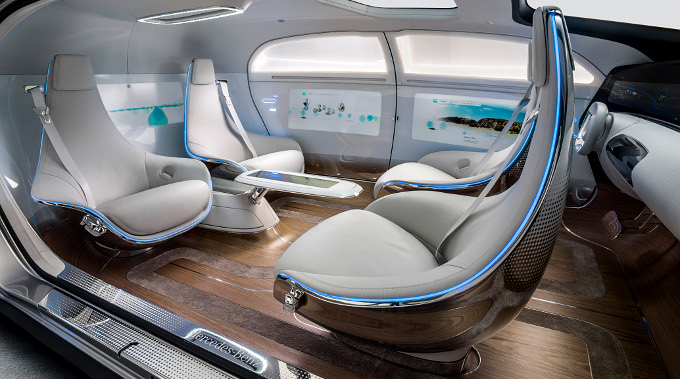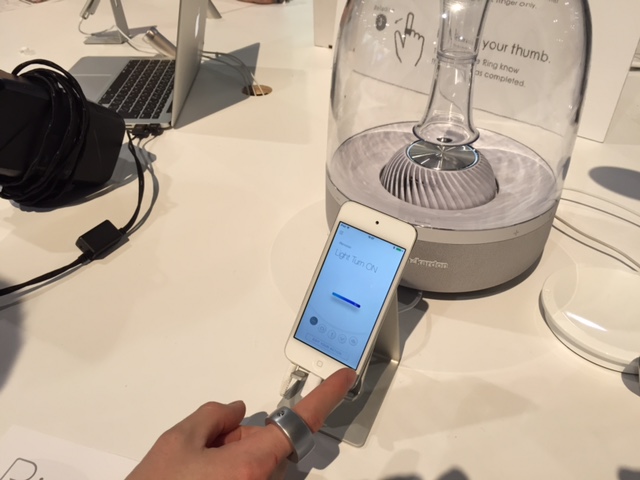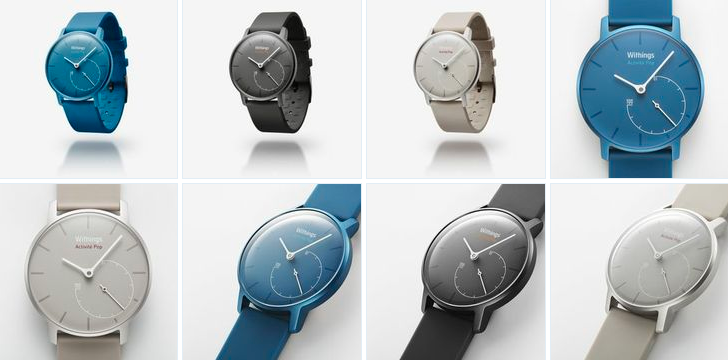We know you’re getting tired of hearing us talk about how far we walked at the 2015 International CES, the big tech trade show that drew 170,000 people to Las Vegas last week. But we’ve got to say it one last time, because we walked miles across 3,600 exhibits and 2.2 million square feet of space to bring you this list: the best of CES.
Some of you may think I’m making this up and that we stayed in our rooms, watched TV, tuned into the keynote livestreams, looked at other web sites, and got drunk at all the parties to the point where we could star in the next movie in The Hangover series. Well, we did go to enough parties to make ourselves truly sick. So our list is late either because we painstakingly debated every single item or because we were so hungover that we couldn’t pull together lucid thoughts until now. But we guarantee you that this is the very best VentureBeat can produce for you at this time.
For the sake of comparison, here’s our list from last year. We tried to refrain from picking things that were on the list last year and still haven’t shipped. (Ahem, Oculus). And we have also decided against including anything that will arrive so far in the future that the Starship Enterprise will arrive first. Here’s a link to our complete coverage from CES 2015.
1. Gogoro smart electric scooter with swappable batteries
We liked Gogoro’s plan because it involved setting up a whole ecosystem.
Gogoro raised $150 million and operated in stealth before it sprung its plan for a smartscooter at CES. The electric scooter has a range of 60 miles, and you can easily swap out the two batteries when they run out of power. You’ll be able to do that at Internet-connected vending machines in dense urban areas, where the company promises it will always have some charged batteries ready. You can find the locations for the batteries via a location network.
That creates a kind of honor system among scooter owners, who can’t abuse the battery-swapping system. Gogoro will sell you the scooter, but it will also charge a subscription fee to access the vending machines. Still, that sounds a lot better than the cost of paying for gas.
2. IO Hawk smart skateboard
Smart Wheels showed off a “personal mobility” device called the IO Hawk that looks a lot like a skateboard, but rides like a Segway. You stand on it sideways, as if you were standing on a board, in contrast to the front-facing way you stand on a skateboard. If you lean back, you’ll move backward. If you lean forward, you’ll move forward. You can lean to the side and turn. It has a top speed of 6.2 miles per hour.
It’s a very simple way to move. But it takes a lot of concentration to do it right. John Soibatian, CEO of Smart Wheels in Montebello, Calif., says you can learn in three to five minutes. I was shaking like crazy when I started using it, but I eventually got the hang of it. Soibatian says that if you can stand on the ground, you can stand on the IO Hawk, as long as you relax. Still, I saw someone fall off of it, so you need to get your safety gear on before you use it. Soibatian said his 10-person company has worked on the product for more than three years. It costs $1,800 now and is available on the company’s web site.
3. Mercedes-Benz F 015 self-driving car
Mercedes-Benz took its new prototype for a self-driving car for a spin on the Las Vegas Strip, and it performed fine with nobody behind the wheel. It has a series of sensors, cameras, and radar systems. The concept car has rounded seats that can spin around 180 degrees so that the front-seat passengers can face those in the backseat. You can control it with a smartphone, and it has six cool dashboard and side panel touch displays that show you a lot of colorful metrics and data about the car.
But don’t expect to see it soon. It may not be available until 2030.
4. Dell Venue 8 7000 Series Android tablet
Dell showed off one of the first Android tablets to get Intel’s new RealSense depth camera. Just 6 millimeters thick, the tablet is powered by a new Intel Atom processor and has special features like the ability to take pictures and then bring different parts of an image into focus. If you shoot a couple in front of the Golden Gate Bridge, you can sharpen the focus on the couple, or sharpen the focus on the bridge. You can also tap the touchscreen to take an image and turn it from color into black-and-white.
The Dell Gallery can also use face recognition to sort your pictures into different, easily accessible groups. It has an 8.4-inch 2,560 x 1,600 organic-light-emitting-diode display, and you can use Dell Cast to mirror the tablet’s screen on another monitor or TV. Not bad for a $400 tablet.
5. iSketchnote drawing pad
The iSketchnote from France-based Iskn is a platform consisting of a smart pen, writing pad, and iOS app that allows you to take your paper creations and transfer them to digital form immediately. As you draw on a piece of paper on the writing pad, the same image appears on the iPad’s screen. Once you’re done, you can add touch-ups or change colors by using the iPad’s touchscreen. Those changes don’t show up on your paper version. The slate has a coating that makes it scratch-resistant and holds the paper in place. The special pen is light and requires no batteries. You can preorder it now for $180.
6. Asus ZenFone 2
The new flagship smartphone from Asus runs on a 2.3GHz Intel Atom processor and has an advanced 13-megapixel PixelMaster camera and plenty of memory. It’s got a 5.5-inch full HD IPS+ screen and an Intel LTE-Advanced modem. All of that means it’s loaded with the latest gear you need to get good reception and take good pictures. It has a 3000mAh battery to get you through the day, and it has a fast-charge technology to reduce recharge times. It starts at $199 for a 2GB model with 16GB of internal storage. And it’s only 3.9 millimeters thick and weighs 170 grams.
7. The Logbar Ring
The Logbar Ring might have been the smallest gadget at CES, outside of chips. It fits around your index finger and allows you to control devices around you with finger gestures. You can use an app to program the ring to recognize a specific hand gesture. So you can turn devices on or off with it and control the volume up or down on a device. The ring has a gyroscope/accelerometer to detect your gestures. It sends the data via Bluetooth low-energy to a mobile device running the app, or it can transmit the data to a Ring Hub, which routes the commands to connected devices such as a TV, speakers, lights, and locks. It also has a sensor on the front so you can select things with your thumb.
8. Withings Activité Pop health watch
Withings came out with a new version of its Activité health watch, the Activité Pop. It has an analog design that tells you the time. But it also has a second dial that shows you how far you’ve walked in a day, compared to your goal for the entire day. The best thing about the new Pop is that it costs $150, compared to $450 for the previous version. It comes in Azure, Shark Grey, and Sand. We like its simple design and how it makes health tracking fade into the background. If you really want to check your progress, you can. And you can get access via the web to more details. At night, it monitors your sleep quality and wakes you up with a gentle vibration. The single standard watch battery last for eight months, and it is water resistant to 30 meters.
9. Panasonic interactive mirror
Mirror, mirror, on the wall. Now you can have a conversation with your mirror, which can make recommendations to your about what kind of eye shadow you should wear. Or it will show you what you look like with rosy cheek makeup. The Panasonic interactive mirror combines a mirror with a transparent display, allowing for visual overlays like the heads-up display in a fighter pilot’s cockpit. Panasonic didn’t have a price or availability for the mirror yet. But it was pretty magical.
10. Sharp Aquos “Beyond 4K” Ultra HDTV
Sharp showed off an 85-inch TV that was beyond 4K in resolution. It was able to display 7,680 pixels by 4,320 lines, or 66 million independently controlled subpixels. That’s 42 million more pixels than a standard UltraHD, or 4K, TV. That’s 167 percent greater resolution. It also had a 4000:1 contrast ratio, and it produces more color than anything Sharp has done before. When you look up close at a display like this, it will seem flawless. It’s a shame Sharp didn’t quite get to full 8K resolution. On the other hand, who cares? It looks great.
Mark Sullivan contributed to this report.












